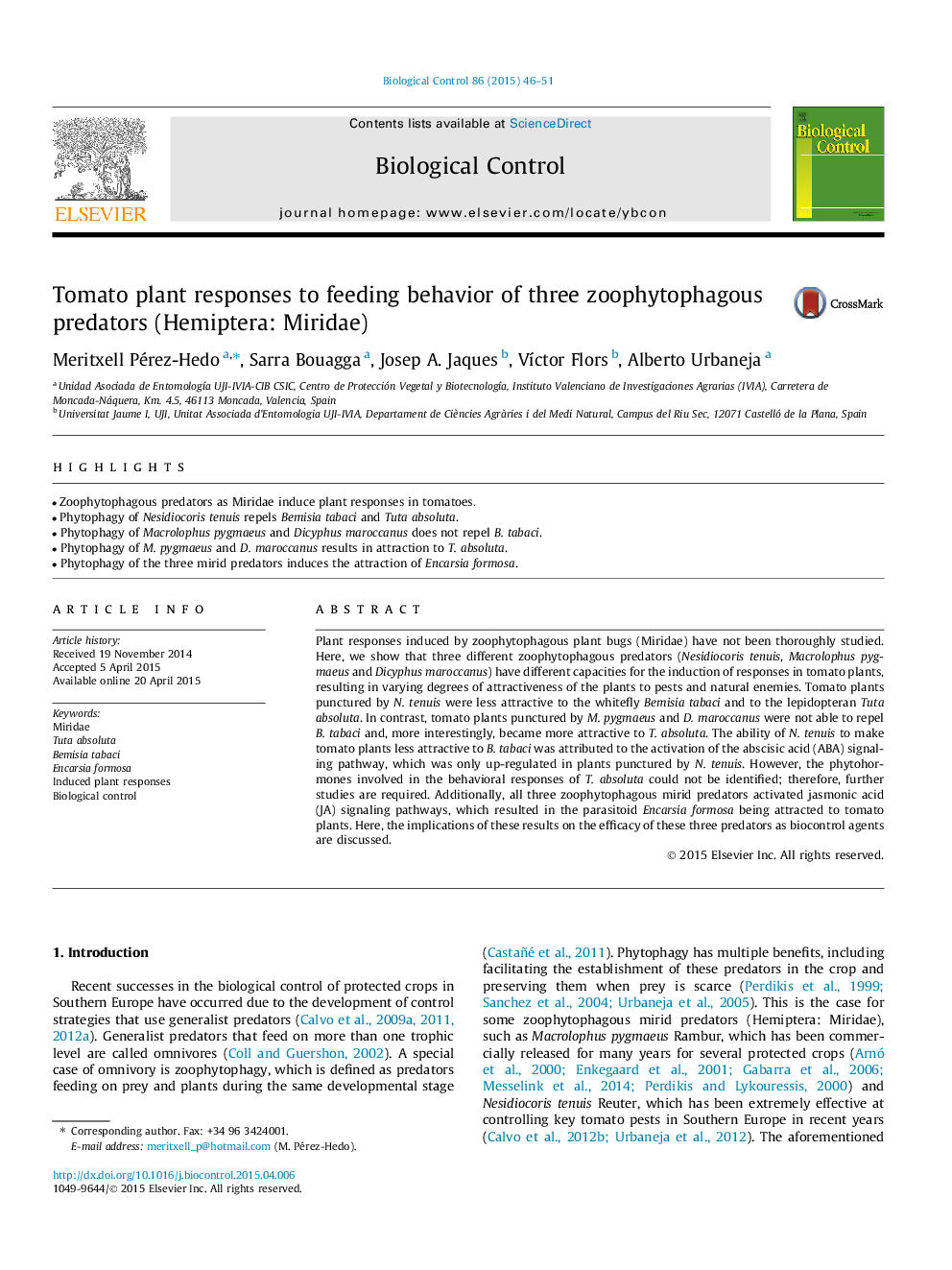| کد مقاله | کد نشریه | سال انتشار | مقاله انگلیسی | نسخه تمام متن |
|---|---|---|---|---|
| 4503760 | 1624248 | 2015 | 6 صفحه PDF | دانلود رایگان |

• Zoophytophagous predators as Miridae induce plant responses in tomatoes.
• Phytophagy of Nesidiocoris tenuis repels Bemisia tabaci and Tuta absoluta.
• Phytophagy of Macrolophus pygmaeus and Dicyphus maroccanus does not repel B. tabaci.
• Phytophagy of M. pygmaeus and D. maroccanus results in attraction to T. absoluta.
• Phytophagy of the three mirid predators induces the attraction of Encarsia formosa.
Plant responses induced by zoophytophagous plant bugs (Miridae) have not been thoroughly studied. Here, we show that three different zoophytophagous predators (Nesidiocoris tenuis, Macrolophus pygmaeus and Dicyphus maroccanus) have different capacities for the induction of responses in tomato plants, resulting in varying degrees of attractiveness of the plants to pests and natural enemies. Tomato plants punctured by N. tenuis were less attractive to the whitefly Bemisia tabaci and to the lepidopteran Tuta absoluta. In contrast, tomato plants punctured by M. pygmaeus and D. maroccanus were not able to repel B. tabaci and, more interestingly, became more attractive to T. absoluta. The ability of N. tenuis to make tomato plants less attractive to B. tabaci was attributed to the activation of the abscisic acid (ABA) signaling pathway, which was only up-regulated in plants punctured by N. tenuis. However, the phytohormones involved in the behavioral responses of T. absoluta could not be identified; therefore, further studies are required. Additionally, all three zoophytophagous mirid predators activated jasmonic acid (JA) signaling pathways, which resulted in the parasitoid Encarsia formosa being attracted to tomato plants. Here, the implications of these results on the efficacy of these three predators as biocontrol agents are discussed.
Journal: Biological Control - Volume 86, July 2015, Pages 46–51